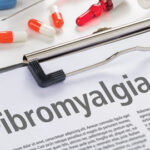At the University of Pittsburgh’s Center for Pain Research, Cheryl Bernstein, MD, treats fibromyalgia patients who have seen numerous physicians, including rheumatologists, for years to address pain. Most have already tried pharmacologic approaches, such as duloxetine or pregabalin, without success. Her clinic uses an interdisciplinary approach to fibromyalgia treatment, including exercise, physical or occupational therapy, cognitive-behavioral therapy, diet and medications.
“Fibromyalgia comes up frequently in my practice. By the time these patients get to me, they are severely distressed. They might have been diagnosed already, but some have gone years without a diagnosis,” says Dr. Bernstein, associate professor of anesthesiology. She confirms fibromyalgia diagnoses using a physical examination and medical history, but says she doesn’t always use the ACR criteria-based survey. Some patients have been previously diagnosed with other conditions, including depression and chronic whiplash or back pain.
“Fibromyalgia patients are very frustrated,” she says. “They think no one wants to help them, even within their own families. They may look healthy, but are in severe distress.”
Diagnostic Guideposts
Not all physicians use them, but fibromyalgia diagnosis often is made using these benchmarks from the ACR 2010 Preliminary Diagnostic Criteria, which the CDC’s website includes for “clinical diagnosis and severity classification” of patients:
- Scores on the Widespread Pain Index (WPI) >7 and a symptom severity scale (SS) >5 or WPI 3–6 and SS >9.
- Symptoms have been present at a similar level for at least three months.
- The patient does not have a disorder that would otherwise explain the pain.
Because the questionnaire variables used in the NHIS survey did not exactly match those in the criteria, Dr. Walitt says he and his fellow researchers developed surrogate diagnostic criteria and PSD scores for their study. They evaluated joints, regional pain sites and fatigue, sleep and cognitive complaints.
Of the 1.78% of individuals in the study who had reported receiving a clinical diagnosis of fibromyalgia, the researchers found that 73.5% did not meet these surrogate, NHIS fibromyalgia criteria. They further concluded that the prevalence of false-positive (F/P) fibromyalgia is 1.3%, and stated that F/P fibromyalgia is associated with mild PSD or an NHIS score of 6.2, frequent but not widespread pain, and insomnia. In addition, the F/P fibromyalgia patients in their study reported measures of work disability and medical utilization equal to those who did meet the NHIS criteria, and they determined that the most accurate demographic predictors of having F/P fibromyalgia were being female (odds ratio of 8.81), married (OR 3.27) and white (OR 1.96).

